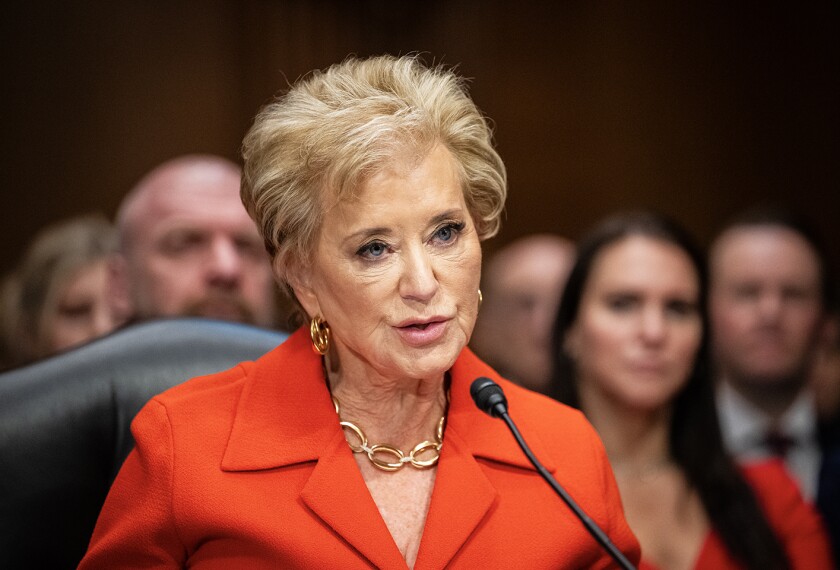Providing all of the world’s children with a free, high-quality primary education by 2015 and giving girls the same access to schooling as boys by 2005 were among the targets expected to be endorsed late last week at the United Nations’ Special Session on Children.
The session here drew delegates from 189 countries and more than 2,000 representatives from nongovernmental organizations around the world.
Its purpose was to assess the progress made toward meeting the global goals set 12 years ago at the World Summit for Children and to agree on a plan of action— called the “outcome document"—for the next 10 years.
Held from May 8 to May 10, the event was originally scheduled for last September, but was postponed following the Sept. 11 terrorist attack on the World Trade Center.
“This is not just a special session on children,” U.N. Secretary-General Kofi Annan said during his opening comments at the gathering, which was also attended by 64 heads of state, and nearly 400 children from around the world. “It is a gathering about the future of humanity.”
U.S. Secretary of Health and Human Services Tommy G. Thompson, who led the American delegation to the session, made clear in his public remarks here that education should be viewed as a key to that future.
“A sound education is a global pathway to success for children in every society, and we welcome joining you as co-laborers in this effort,” Mr. Thompson said in his opening statement. Despite the overall positive tone of the session and the proposed document, the United Nations’ agenda on children has not been without controversy in the United States.
While much of the outcome document had been agreed to by the member nations before the session began, the United States was still objecting last week to phrases that call for giving adolescent girls access to “reproductive health care” and sex education—language some have interpreted as an endorsement of abortion. Late last week, delegates were working to reach a compromise that would lead to unanimous acceptance of the document.
The United States had originally refused to participate in the special session when it was scheduled last year, but later agreed to send Mr. Thompson and Secretary of Education Rod Paige. The education secretary had been slated to attend the gathering in September, but was not on hand for the rescheduled session last week.
U.S. Dissents
The United States is one of two countries—the other is Somalia—that have not ratified the U.N. Convention on the Rights of the Child, an international treaty approved by the United Nations in 1989 that focuses on children’s safety, health, and education.
In addition to concerns about the abortion issue, critics have charged that the treaty undermines parental authority by asserting children’s rights to free expression, association, and religion.
“What’s not in [the treaty] makes it a vicious thing,” said Patrick F. Fagan, a fellow in family and cultural issues at the Heritage Foundation in Washington, adding that the document “softly, gently puts aside the role of parents.”
During Secretary Thompson’s comments to the U.N. General Assembly, support for the family was a clear theme.
“Recently, the United States has begun promoting healthy behaviors and right choices for young people,” he said. “Our efforts include strengthening close parent-child relationships, encouraging the delay of sexual activity, and supporting abstinence education programs.”
In spite of the United States’ objections to the treaty and parts of the outcome document, however, Cream Wright, the chief of the education section at the United Nations Children’s Fund, or UNICEF, said the United States and the rest of the U.N. members generally agree on goals for children’s health and education.
And Carol Bellamy, the executive director of UNICEF, said: “There is a broad range of views at this meeting, and people ought to say what they think.”
Goals Not Attained
The outcome document, which not only addresses children’s educational needs, but also sets goals for improving children’s health, reducing violence and abuse, and fighting HIV/AIDS, was largely based on Secretary-General Annan’s report “We the Children,” released last year.
According to that report, the 1990s were marked by both strides and setbacks for children. For example, more children are surviving worldwide because of higher immunization rates. Polio has almost been eradicated. Greater attention has been brought to the issues of child labor, exploitation, and trafficking, and more children are in school than ever before.
But 100 million children—60 percent of them girls—still lack even a rudimentary education, the report said. And roughly half a billion children still live in what the World Bank calls “absolute poverty.”
“The world has fallen short of achieving most of the goals of the World Summit for Children, not because they were too ambitious or were technically beyond reach,” the report said. “It has fallen short largely because of insufficient investment.”




